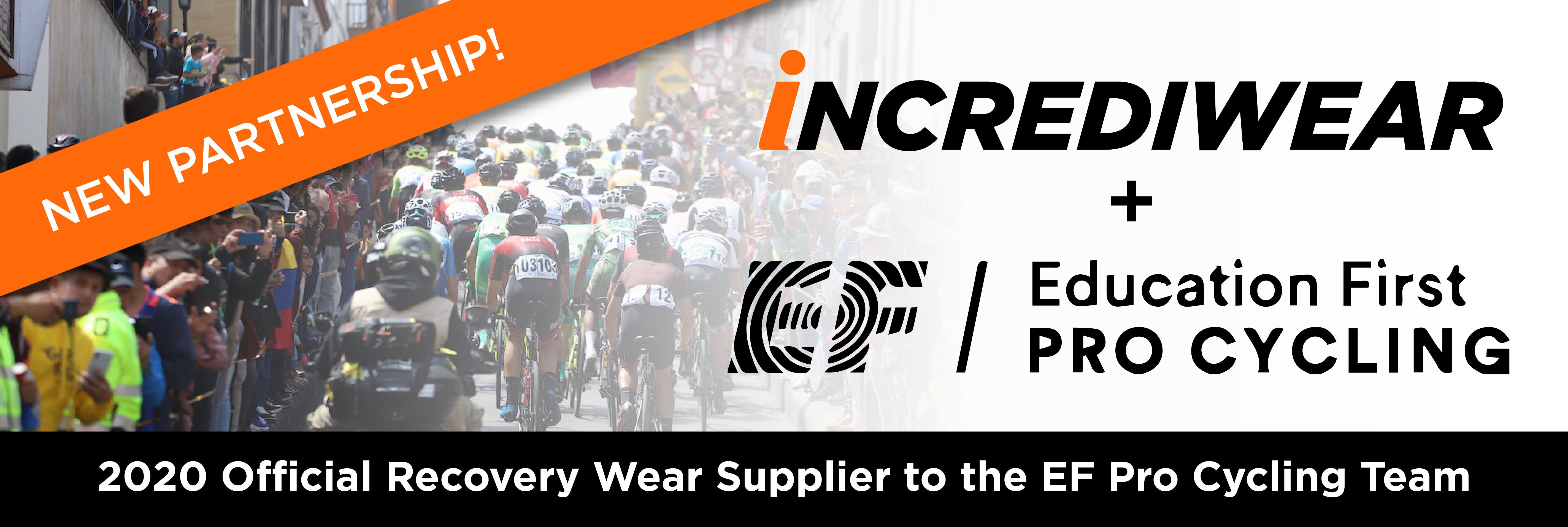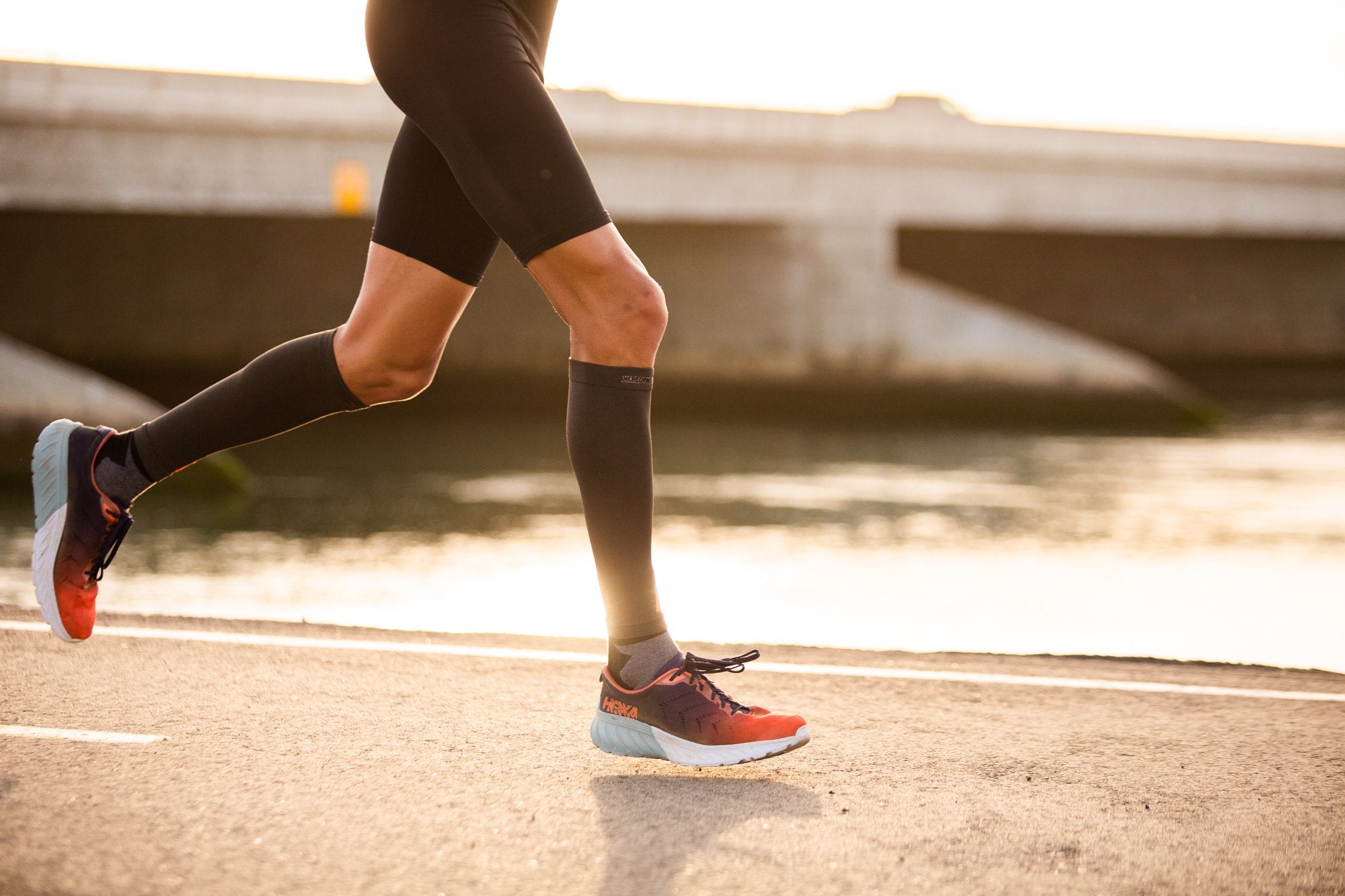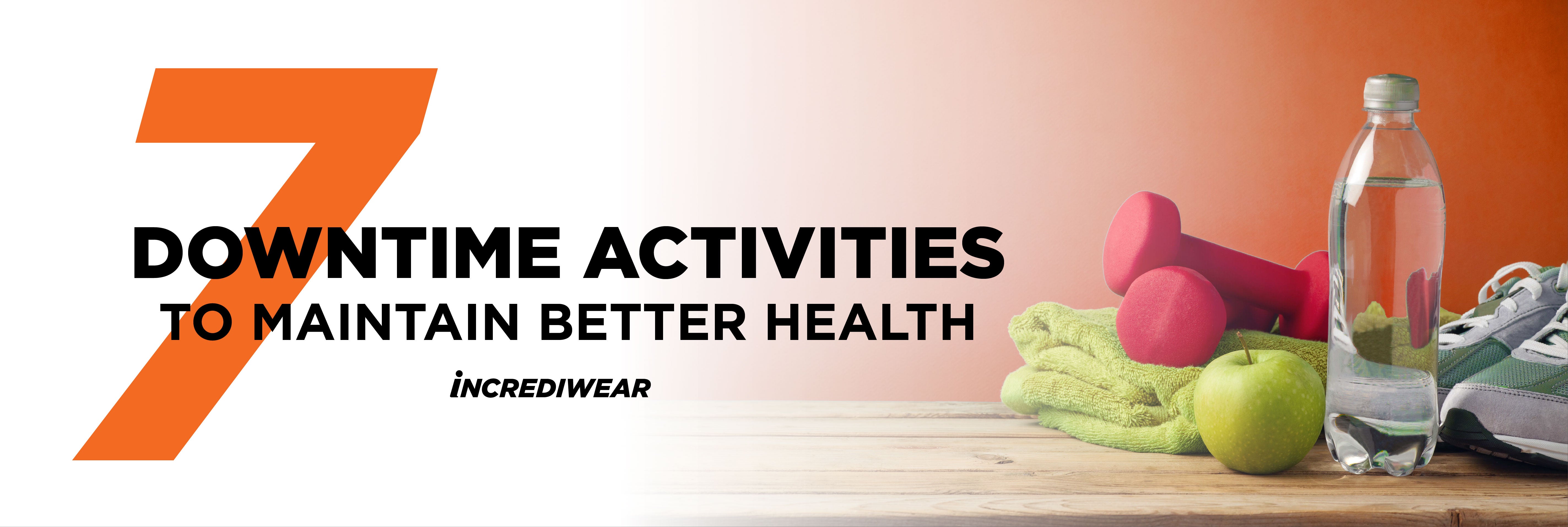Staying healthy is never easy - especially in current times with the threat of new viruses, a never-ending to do list, and pressure to keep up. But, if you establish a routine and work on a little self-care, healthy living may not be too far our of your grasp.
Here are some of our favorites to get you started.

1. Meditation
Meditation is so good for you, it should always be part of your normal routine. It can be especially important when you can’t get to your regular exercise sessions.
If you’re in the middle of travel, a time crunch, or otherwise missing your regular exercise, meditation helps to reduce stress and improve decision-making. These are both things you’ll appreciate during the chaotic and stressful times that intrude on everybody’s lives.
If you’re hurt or sick, meditation is doubly good. First, it’s a way to focus on wellness even when your body is compromised. Second, it’s been shown to boost the immune system and even speed up healing from injuries.
Pro Tip: Wear your Performance Pants while meditating or doing yoga to speed up recovery even more, and reduce any aches and pains you may have going on.
Choose a form of sitting meditation that works for you, then practice in five-minute sessions.
Resources to Get You Started
- How to Sit for Meditation: 8 Options
- How To Meditate: Zazen Instructions
- Guide: Everything You Need to Start Meditating

2. Body-Weight Exercises
The trouble with weight training is you can’t really pack your kettlebells for a week-long business trip, let alone the plates and bench for a session of powerlifting. Sure, lots of hotels have a gym, but not all of them. And some gyms don’t have much more than a line of treadmills and a couple of TVs perma-tuned to infomercials.
But you don’t have to skip resistance training when you travel. Your body comes equipped with more than 100 pounds of weights you can lift in a variety of ways using simple body-weight exercises, some of which you may know - like pushups, situps, and burpees.
With a dozen of these in your mental back pocket, you can get a solid workout no matter where you find yourself.
Pro Tip: Protect your joints from a quick body-weight HITT session with the Knee Sleeve or Elbow Sleeve. Because it is relatively low weight, repetitions are typically higher thus putting more stress on your joints.
Find a body-weight exercise routine that works for you, and practice it until you have it memorized.
Resources to Get You Started
- Bodyweight Workout: 50 Exercises You Can Do on Your Own, Anywhere
- 10 Minute Morning Yoga for Beginners
- Isometric Exercises You Can Do at Your Desk
3. Use the Pool
Swimming, aqua aerobics, and other in-water exercises are an excellent choice for people recovering from an injury because they reduce the impact of exercise to zero. While in the water chest deep or so, your joints and core no longer bear the weight of your body.
That means you can move through positions and motions your injured self couldn’t manage, allowing you to begin gently exercising your body even while it’s still healing. As a bonus, the water itself provides resistance, so any movement you take builds muscle, even while it’s straining your injuries less.
Water exercises are also a good option for long business trips. Most hotels have a pool, so you can get a combination of resistance and cardio training even under adverse circumstances.
4. Go For a Walk
Walking is good for you and should be part of your normal routine as well as whatever you do for a “real” workout. Industry leaders such as Harvard Medical School encourage walking for reasons including:
- Slowing weight gain
- Reducing appetite
- Quelling food cravings, especially cravings for sweets
- Lowering the risk of some forms of cancer
- Easing and reducing joint pain
- Boosting your immune system
- Improving cardiovascular health
If you’re experiencing downtime because you’re away from your regular routine, it’s easy to take a walk in most places, whether you’re exploring a new area or on the treadmill in the gym at a convention. You can even turn an airport terminal into an impromptu walking track. If you’re injured or recovering from an illness, short walks can be the first steps toward your regular active lifestyle.
Pro Tip: Don't forget to wear your Active Socks to relieve fatigue while spending long hours on your feet.
Resources to Get You Started
- Exercising After an Injury
- Why Walking Is the Most Underrated Form of Exercise
- The Beginner's Guide to Walking for Fitness
5. Cross-Train
An injury to one part of your body may mean you have to take it easy with certain limbs, but it doesn’t mean you can’t do anything until you’re off the disabled list. A sprained wrist just means it’s leg day every day for a while, and a broken toe lets you focus on those biceps.
Cross-training can be especially gratifying for serious athletes. If you’re the sort who goes a little crazy standing still at a stoplight, then this might be best for you. You can also cross-train at a hotel if you’re traveling.
Your First Step
Talk with your trainer about which muscle groups you can safely work out, then develop a plan to do exactly that while you recover. Don't forget to wear your Incrediwear sleeve or brace on the injured area for improved recovery rates.
Resources to Get You Started

6. Focused Stretching
Stretching is important to everyday health and fitness. It helps to improve range of motion and decrease your risk of injury while working out and during regular life. It also has the benefit of requiring little time and no extra equipment.
If you can’t get your workout in because of constraints on your time or location, a 15-minute session of focused stretching keeps your body active and your mind on your wellness. You can do it in a hotel room, on your in-laws back porch, or even in an airplane seat while waiting for takeoff.
When you’re sidelined because you’re ill, a set of stretches while lying or sitting down can be equally beneficial. It doesn’t tire your body like a full exercise session but does prevent many of the joint and muscle aches associated with lying still for too long.
Resources to Get You Started
- The 21 Best Stretching Exercises
- The Daily 5-Minute Stretching Routine
- The Five-Minute Full Body Stretch
7. Gratitude Journal
Sometimes, you’re out of action with no options except to rest until your body is ready for even the simplest training. When that happens, your best option is to remain still, resting and healing until your doctor and your body tell you to begin the long road back to your normal self.
That’s never fun, especially to people accustomed to being active and fit. But that doesn’t mean you should ignore your recovery team’s instructions and start moving before your body is ready. Such mistakes can prolong recovery by weeks, months, or even years.
But that doesn’t mean you can’t do anything at all. Research has found that intentionally focusing on gratitude, even in a situation where it’s difficult to feel grateful about anything at all, can actually accelerate healing and improve health. It may sound a little out there, but really, it’s a form of meditation. And as we discussed earlier, the benefits of meditation are well-studied and firmly established.
Focus on one of the people assisting you during your recovery: a caretaker, romantic partner, family member, or professional. Think with focus and emotion about all the things that person has done for you this week.
Resources to Get You Started
Final Thought
In cases other than illness and injury, most people fall out of a fitness routine because they run out of time. However, recent research has found that even 20 to 30 minutes of moderate exercise increases productivity by several hours’ worth of focus and energy. Also, wearing Incrediwear can help you recover 46% faster and miss fewer days from your regular training. If you think about it that way, your busiest times are the times you most need to do some of the things on this list.
Tim Wise worked on Wall Street for two decades before he moved to Montana, where he spends his free time meditating and hiking in the mountains with his family of six.
Read more

Cycling is one of the most grueling sports out there. Rides regularly hit the double mileage digits, you burn an extraordinary amount of calories, and you use your whole body to maximize performanc...

Shop the Leg Sleeves >>> Shop the Circulation Socks >>> ...







1 comment
Thank you!!!
PAtrice
Leave a comment
All comments are moderated before being published.
This site is protected by hCaptcha and the hCaptcha Privacy Policy and Terms of Service apply.